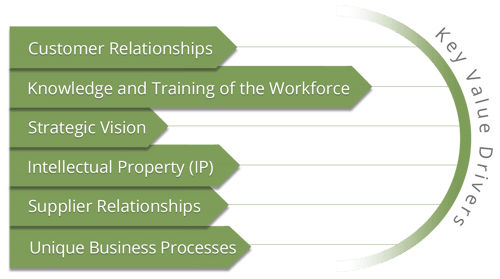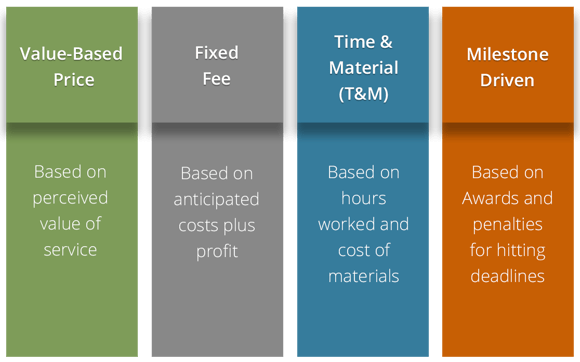.jpeg?width=682&height=455&name=AdobeStock_121468280%20(1).jpeg)
Building a profitable service business starts with defining a solid business strategy. This is where you define the uniqueness of the company and your services so you can get everyone aligned around your vision, mission, and values.
You need to start here as this is the foundation upon which to create a high-performing team or enhance the performance of your current team. Let’s take a look at the questions you need to ask and answer to define your business strategy and increase profits.
Why Do You Exist?
Self-knowledge is a critical component of your business strategy. Ask the who, what, and why questions to determine why your company exists.
While a business plan is focused on the financial foundation, target market, and operational structure of a business, a business strategy is focused on the who, why, and what of your organization.
If you’re approaching a bank or other financier about funding for your company, your business plan can make or break the deal. A business strategy focuses on what’s unique about your business - why someone should hire you or come to work for you.
Value drivers are variables that add significant value to your company. According to CGMA, today’s business drivers are 68 percent non-financial. That means the value for a service business is in the people, and those key value drivers include:

What Is Your Unique Selling Proposition (USP) ?
This question goes right to the core of the “know thyself” mantra. Regardless of what industry you’re in, you’ll have competitors that sell a similar service to yours. To set yourself apart from the competition, you must know exactly what exclusive benefit you offer that will attract customers—and keep them coming back for more.
A great example of USP and brand positioning is Salesforce.com - Their USP was that their web based tools implied the end of software. They developed a "No Software" logo that helped them "own" the idea in the minds of their prospects.
Amazon’s USP was originally “Earth’s biggest bookstore.” Did Jeff Bezos deliver on that? Do we have to ask?
Enterprise has another excellent example of a winning USP: “We can provide free local pick-up and return service,” and it shows in their tag line “We pick you up.”
Theodore Levitt, a professor at Harvard Business School, suggested that…
"Differentiation is one of the most important strategic and tactical activities in which companies must constantly engage."
Who Is Your Ideal Client?
Every business has an ideal client. It’s someone who finds the perfect solution to their problems or needs in the services or products that your company provides.
The Ideal Client is loyal to your company, loves using your products or services, and is even likely to recommend you to their friends and colleagues. In addition, especially for service businesses, the client has to fit
YOUR definition of IDEAL:
- Be at the right lifecycle/growth stage of business
- Be the right size - revenue or # of employees or both
- Have the right attitude or psychographics
- Be serviceable at great margins
- Have potential for better than average retention and lifetime value
Why Should People Buy From You?
When you know your USP and your ideal client, you also know what differentiates your product or service, as well as what needs they meet. For example, a business with a remote workforce can’t afford subpar cyber security because it could compromise the system’s functioning, as well as proprietary information about employees and clients. If your cyber security solution is demonstrably better than all others, the company will purchase yours.
Similarly, a medical product manufacturer can’t outsource its customer service to just any contact center. It needs a center that can provide agents who are trained in technical support for this particular product, and at the same time deliver robust technology to handle high call volumes. If you can quickly train a team of capable agents and provide the necessary hard - and software, you’ll be the company that lands the client—not an offshore company that delivers lower quality service.
What's Your Go-to-Market Strategy?
You can have the best service in the world, but if you don’t know how to get it in front of the right people in a way that clearly demonstrates how it can benefit them, it’s not likely to sell. That’s where a go-to-market strategy comes in. Typically, your go-to-market strategy is used to launch your service in a coordinated manner that’s specifically designed to support its success.
Your sales and marketing strategy will continue to evolve as your company grows and you add products or services.
You can create your go-to-market strategy by defining exactly who your customers are, defining your value drivers, and deciding on a price strategy. Other decisions to be made around your sales and marketing strategy may include:
- Direct salesforce vs. online
- Positioning & Branding
- Pricing
- Inbound marketing vs. outbound
- Channel Strategy
- Referral Strategy
As a CEO you should have resources, internal or outside agencies to help you define the strategy that is best for your company and industry.
Who Are You Serving?
Many new entrepreneurs make the mistake of trying to sell to as large a target market as possible. While this might seem logical, the truth is that it’s more difficult to sell something to everyone than to focus on just a target group. Why? Because it’s almost impossible to create a selling strategy that will appeal to everyone.
The smarter choice is to focus on a small segment of the market. Maybe you’ve heard the saying “The riches are in the niches.” Basically, this means that if you target a segment of the market, you can study that group to determine their exact pain points, the specific benefit they derive from your service, and the highest price they’re willing and able to pay. That makes creating an effective marketing campaign much easier.
As your company matures and grows, there’s room to branch out into new niche markets either with the same service or new ones. However, the most profitable companies solidify their position with one specific market first.
What's Your Pricing Strategy?
Pricing is the most important component of a successful go-to-market strategy.
The customer wants a price that’s reasonable in terms of the scope and quality of the product or service. In some instances, innovation and timeliness can play a role, too. On the other side of the equation, you need to cover the cost of creating and marketing the service—and make a profit. The price you ultimately decide on should balance your needs with those of the customer.
There are four pricing models to choose from:

Key Takeaways - Business Strategy
- Self-knowledge is a critical component of your business strategy.
- When you know your USP, value drivers and ideal client, you know what sets your service apart and what specific need it meets. That’s the foundation to building a high performing team.
- Determining your people strategy is critical to your company’s success. You need to attract people who are passionate about your vision by creating a company culture where they can thrive and work towards self-actualization.
- Your go-to-market strategy should support your product launch. When designing your go-to-market strategy, determine what market segment you’re targeting, your value drivers and your pricing strategy.
Learn the Five steps to a Profitable Service Business by downloading The CEO's Guide to Increasing Profits today...

.png?width=563&height=144&name=New%20GF%20Logo%20(37).png)

